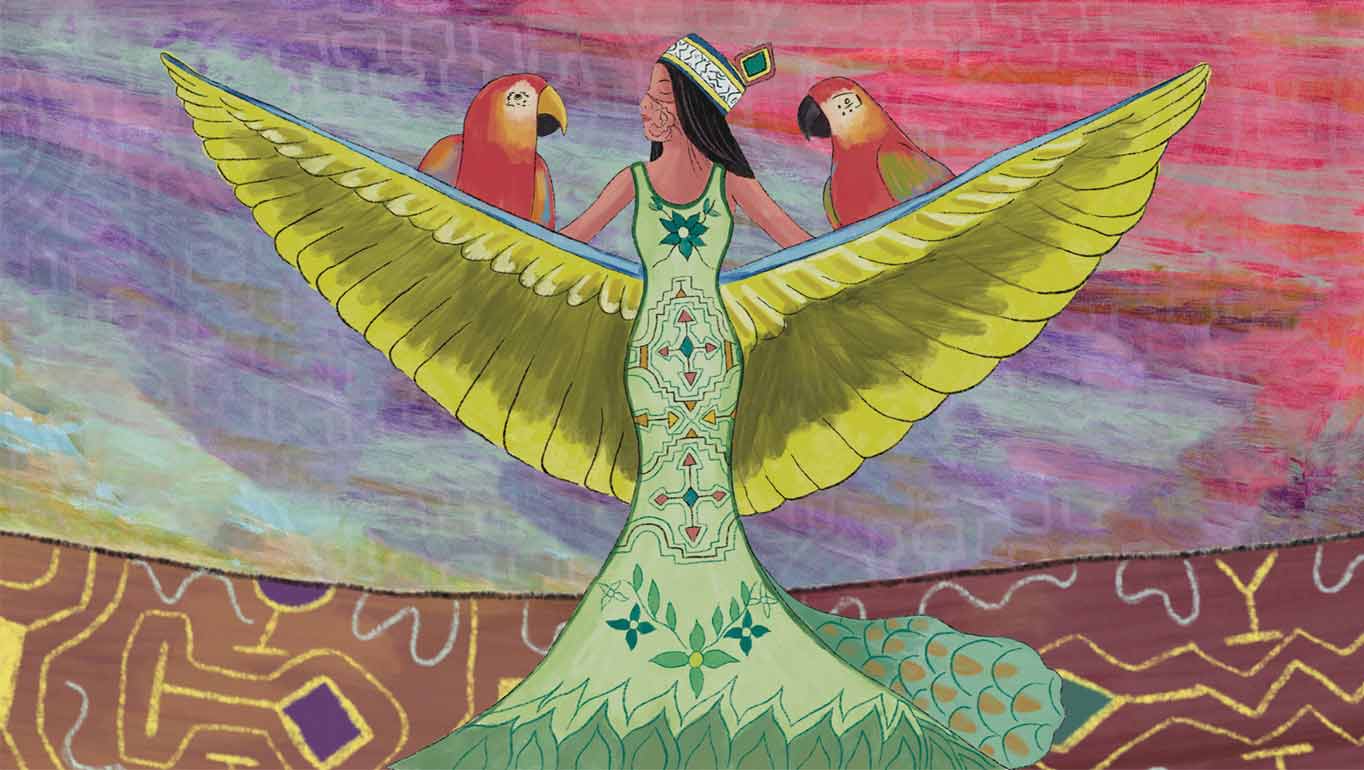Amazonia is seeing an unprecedented movement of Indigenous peoples from rural to urban areas, a process that will have major social and environmental impacts on the region. Many of these Indigenous migrants are young people who leave their rural communities to access new opportunities in urban contexts. But when they get to the city, indigenous youth face unexpected challenges, including unemployment, lack of support networks, and economic hardship.
I have conducted ethnographic research with children and youth in Amazonian Peru for over a decade, using youth-centered methods to elicit their own perspectives. Besides economic and material difficulties, I found that a key issue for indigenous migrant youth is the sense of becoming increasingly distanced from their communities and heritage. Many of these young people lack the traditional skills and knowledge of their parents and grandparents, who still live in rainforest or riverine villages. They can no longer perform ritual ceremonies, they are forgetting the myths recounted by older generations, and many are no longer fluent in their native languages.
The United Nations Permanent Forum on Indigenous Issues reports that most indigenous languages may become extinct by next century, and with them, entire bodies of knowledge will be forgotten. This sense of precarity and uncertainty is causing major anxiety amongst Amazonian youth, who perceive the future of indigeneity as radically threatened while lacking recognition from both the state and the rest of society. It seems urgent and imperative, therefore, to create spaces where indigenous youth can voice their own concerns and feel heard, while being actively involved in strategies towards the sustainable future of their societies.
Animating the future
Aiming to address these issues, I am currently leading a project, Animating the Future, that explores the life trajectories of migrant youth in different regions of Amazonian Peru. The project is conducted in collaboration with academics in Peru, indigenous researchers, professional animators and Amazonian artists. We use co-production of animated films as a participatory method through which indigenous youth can tell their own stories, while learning practical skills to document traditional heritage that is under threat.
We deliver youth-led workshops where indigenous youth discuss their own experiences, focusing on what matters most to them. The team’s professional animators, Sophie Marsh (UK) and Rous Condori (Peru), teach them how to produce animations from start to finish. Young people create storylines based on our discussions, write scripts, produce storyboards and animate in stop-motion. We use software that is free to download on smartphones (which mostly everybody owns) so that after we leave, young people can continue to make animations with available technologies.
Amplifying youth voices
When making animations on the future, indigenous youth were eager to portray aspects they identified with ancestral pasts. They animated river dolphins taking people away to their underwater worlds, according to a widespread Amazonian notion that dolphins are malevolent water spirits. It allowed them to recount myths heard from their grandparents, where carnivorous condors grab fishermen from their canoes and forest spirits lure hunters away. They also imagined the Shipibo kené (geometrical patterns typical of Shipibo people’s art) being used in high-end fashion designs, and proudly exhibited by Shipibo models on fashion runways in Paris.
In young people’s imagined futures, this traditional knowledge merges with their new urban lifestyles, as they actively redefine the meaning of indigeneity in the urban contexts. Animation can be a powerful tool to bring these imagined futures into view, amplifying youth voices that remain unheard and creating a space of self-representation that indigenous peoples are often denied.
Steps towards the future
A few indigenous schoolteachers and parents asked us to conduct further work to document Amazonian mythology. They wish to produce animated films based on traditional myths that only the elders can still recount and embed the animations in the intercultural school curriculum so that indigenous children can learn about them. Their aims align with those of the United Nations Declaration on the Rights of Indigenous Peoples, which calls for governments and policymakers to take action to preserve indigenous languages and traditional knowledge.
We found that involving youth actively in documenting traditional cultures through visual methods can be a powerful way to achieve this goal, creating a space where young people who feel unseen can gain a sense of visibility. We are reaching out to decision-makers and inviting them to listen to the needs and concerns of young people in Amazonia, so that we can work together towards an inclusive future – one where indigenous youth can benefit from the opportunities offered by urban society, while seeing their indigeneity thrive.
Animating the Future is a research project funded by the British Academy and based at the University of Bristol. It is led by Dr Camilla Morelli in collaboration with Professor Patricia Ames and Professor Pilar Valenzuela.



